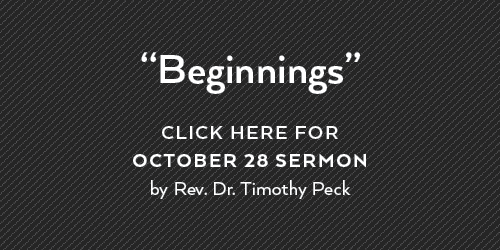Click for a PDF version
Monday
Read Revelation 1:12-18; Daniel 7:13-14; Matthew 21:7-11
Before commencing the 1 and 2 Kings series next week, let’s revisit how we began 2024: Epiphany, considering the One called “Son of Man” 82 times throughout the New Testament. Among Jews, the long-awaited Messiah was “the Son of David” (Matthew 21:9), a title used in the New Testament 14 times. Israel’s King David was promised that his seed would rule God’s kingdom forever (2 Samuel 7:12-16). Jesus fulfills this, yet His intriguing, favorite Self-title was “Son of Man.”
“Son of Man is a title of humanity. … Jesus Christ was truly a Human … He came ‘in the flesh’ (1 John 4:2). Son of Man is a title of humility. The [eternal] Second Person of the Trinity … left heaven’s glory and … becoming the Son of Man … [was] born in a manger and ‘despised and rejected by mankind’ (Isaiah 53:3), … [having] ‘no place to lay His head’ (Luke 9:58) … The Son of Man suffered at the hands of men (Matthew 17:12), … the epitome of humility.
“Son of Man is a title of deity. … Jesus is the supreme Example of all that God intended [humankind] to be. … In Him ‘all the fullness of the Deity lives in bodily form’ (Colossians 2:9). … [Thus, He] was able to forgive sins (Matthew 9:6), … [the One who] came to save lives (Luke 9:56; 19:10), rise from the dead (Mark 9:9), and execute judgment (John 5:27) … [the] Son of Man is a fulfillment of prophecy … [particularly] Daniel 7:13–14.” (GotQuestions?org)
Among ancient Israel’s issues: an entitled attitude of superiority, fueling an “us/them” mindset. Outsiders were shunned, often called “dogs” and loathed for corrupt practices and worship—ironically, God judged Israel repeatedly for its widespread idolatry. The 1st century Jews generally expected a Messiah coming to throw off Roman oppression, one politically and militarily gifted. The notion of the Christ having an agenda transcending Israel’s personal interests escaped them.
Jesus was “the Son of David.” However, as the Savior of all humankind and fallen creation, His mission surpassed merely Israel’s redemption. Draw closer to the “Son of Man” this week.
Questions
Why was Jesus called “the Son of David”? Why do you think Jesus favored “Son of Man” as a Self-title? How did the Messiah’s first Advent mission differ from what many ancient Jews apparently expected?
Prayer
Father God, we pray that You continue to renew us, renew our minds, our spirits, and our hearts in Christ. You make all things new—we ask that You shape us into increasing Christlikeness so that we might better love and serve You in our homes, neighborhoods, community, and country. Thank You for Your mercies, which are new every morning!
Tuesday
Read Revelation 1:12-13; Acts 9:1-6; Colossians 1:17-19
Who is the head of your church? Some Glenkirkers might answer, “Tim Peck.” However, Pastor Tim would be the first to disagree: “No—Jesus Christ is the Head of Glenkirk Church!” Today’s Revelation passage references “… in the midst of the lampstands One like a Son of Man …” (1:13). This clearly pictures our Lord, the “Head of the … Church” (Colossians 1:18), but why the lampstands?
“[Old Testament] priests … were … chosen to move about inside the Tabernacle (later the Temple). They ministered before God, making sacrifices … [and tending] the golden lampstand. They kept the oil filled, … trimmed the wicks [and] insured that the light would [be sustained] in the Holy Place.” (STG) “These candlesticks were made of gold … [symbolizing] the preciousness of the Church as God’s most valued possession. The gold of the lampstands … [also represents] purity and holiness.” (GotQuestions?org)
Jesus heads the true Church as “our Great High Priest” (Hebrews 4:14), representing His own before the Father. His ultimate representation here was—as the “Son of Man”—sacrificing in a glorious, divine transaction upon Calvary’s cross: exchanging His perfect life for our broken, sinful lives. Jesus received the fullness of our sins and judgment; in Christ, we gain His righteous standing before the Father.
But Jesus is no aloof, inaccessible Priest. Note His intimate identification with the Church, “His Bride” (Revelation 19:7), while encountering the future Apostle Paul preceding his conversion on the Damascus Road: “Saul, Saul, why are you persecuting Me?” (Acts 9:4) “Christ stands in the center of the seven [lampstands], in the midst of His people … always present with His Church. …
“A candlestick is not the light itself but the bearer of the light. Jesus is ‘the Light of the world’ (John 8:12), and … the Church’s mission is to hold that light up for the world to see.” (GotQuestions?org) Is your “lampstand” reflecting Jesus’ light as brightly these days as previously? Serve others lovingly for God’s glory and kingdom purposes, living and sharing the Gospel. Then the Church’s Head might affirm you gloriously, “Well done, good and faithful servant!” (Matthew 25:23).
Questions
Who is the head of Glenkirk Church? What do the lampstands of Revelation 1:13 represent and why is the Lord pictured standing amidst them? Why did the risen Christ confront Saul of Tarsus on the road to Damascus, asking, “Saul, Saul, why are you persecuting Me?”
Prayer
Almighty God, never let us forget that Jesus Christ is the Lord, the Head of the Church, its Bridegroom, and the King of kings and Lord of lords! Thank You for our salvation, which we can know only in the Savior, our Lord. Please stir us, Father, to greater faithfulness in this new year, to scatter the seed of the Gospel wherever we go for Your glory.
Wednesday
Read Revelation 1:13-15; Isaiah 52:14-53:2; Daniel 7:9-10
Art often depicts a white Jesus with flowing blondish hair, blue eyes and a tidy beard. However, Jesus was Jewish, therefore likely with darker, normal, Semitic features. Today’s first passages are the closest descriptions we have of His appearance—the Isaiah text characterizing the first Advent’s Suffering Servant; Revelation 1:13-15 shows the Son in divine glory. Perhaps the Bible’s haziness regarding Jesus’ visage is per the Second Commandment, forbidding graven images (even Christ’s) as worship objects.
“He had no form or majesty … no beauty that we should desire Him” (Isaiah 53:2). This, coupled with Jesus’ teaching—often featuring enigmatic parables or hard-edged challenges—makes the Savior feel like One actively deterring potential followers. However, this was at least partly to ensure the disciples’ sincere motives—following Christ to know and serve God versus seeing Him as an irresistible “rock star” or charismatic miracle worker. Love must be voluntary, never coerced.
“[Jesus’ hair was] white, like white wool, like snow” (Revelation 1:14). This may reinforce some people’s view of God as a kindly, old, white-bearded man—but that’s Santa Claus, not Yahweh. Note, however, this description’s similarities with Daniel’s “Ancient of Days” (Daniel 7:9): “His clothing was white as snow, and the hair of His head like pure wool.” There is more here than simply “like Father, like Son” dynamics.
“A Son of Man … [in] a long robe with a golden sash” (Revelation 1:13). Jesus is our Great High Priest, gold representing divinity. “[His hair was] white, like … wool … [or] snow” (v. 14)—“white” symbolizes purity, perfection. “Eyes … like a flame of fire” (v. 14)—He is the righteous Judge. “Feet … like burnished bronze, refined in a furnace” (v 15)—Jesus “learned obedience through what He suffered” (Hebrews 5:7), walking among us as the “Lamb of God” (John 1:29). “His voice was like the roar of many waters” (Revelation 1:15)—He is Almighty God Himself
I love the notion that Jesus’ appearance aligns with His followers’ appearance, regardless of their race or ethnicity. After all, He is the “Son of Man [who] came to seek and save the lost” (Luke 19:10). Know anybody fitting that description?
Questions
Why do you believe the Bible is vague regarding Jesus’ physical appearance? Why didn’t God fashion the Messiah to be strikingly handsome or otherwise distinctive in His looks? Which of the elements describing Jesus in Revelation 1:13-15 interests you most?
Prayer
O Heavenly Creator and Lover of our souls, forgive us for so easily succumbing to idols. Help us see Jesus more clearly in 2024, not the popular depiction per artwork nor merely the “good man and great teacher” seen by those discounting His majesty and deity. Help us to better see the living Christ, the resurrected Lamb and Purpose of all creation.
Thursday
Read Revelation 1:16; Hebrews 4:12-13; Malachi 4:1-2
I cringe when hearing some refer to the Bible’s final book as Revelations, misnaming it plurally. Likewise, this book is not “The Revelation of the Apostle John,” as another denomination emphasizes. It is the Revelation—the Unveiling—of Jesus Christ, the Almighty Creator, Redeemer and Judge of the universe whose purity, radiance and beauty are unbearable for the unrepentant.
In Exodus 33:18, Moses asks God to “show me Your glory.” God—knowing that a mere, sinful mortal cannot survive experiencing His consuming holiness—places Moses in a rock’s cleft, wherefrom he could safely view the afterglow of God’s majesty (Exodus 33:19-23). And so it is with God the Son in the revealed fullness of His deity. The redeemed in Christ stand in His presence, but unbelievers will one day be consumed by His holiness in judgment. (Revelation 20:15)
God’s inspired Word, the Bible, is the “sharp two-edged sword” (Revelation 1:16) biblically alluded to similarly in Isaiah 49:2 and elsewhere. It divides in showing the Way to salvation, “[separating] sheep from the goats” (Matthew 25:32). “This sword stands for divine justice … Jesus Christ was, and is now, the Executor of righteous judgment and justice. … The Gospel which came from the mouth of Jesus is the two-edged sword … [which] proclaims grace to those who repent and put their faith in God, [but] judgment upon the impenitent and disobedient.” (James Burton Coffman)
“His face was like the sun shining in full strength” (Revelation 1:16). Judges 5:31 makes a related “sun” reference, implying its life-sustaining, warming effect for “[God’s] friends.” That same verse, however, ominously implies that one day “all Your enemies [will] perish, O LORD!” The sun is a source of warmth and power, essential to life itself, but too radiant for us to stare at idly—so it is with the “Son of Man.”
Few are won to Christ by threats of fiery judgment and damnation. However, the reality of future judgment is why the good news of Jesus Christ is “sweet as honey in [a believer’s] mouth, … [while] bitter [in their stomach]” (Revelation 10:10). Help those you know avoid such bitterness.
Questions
What is the emphasis of the book of Revelation? Why can no mere mortal gaze upon God and survive? What does “the Bible is like a sharp two-edged sword” mean?
Prayer
Our righteous Judge and Redeemer, help us to better grasp the fullness of Your glory to the extent we are able. Show us the sins and other obstacles that keep us from fullness of relationship in Christ; stir us to repent here. And Father, please give us hearts that yearn for more of Your Word and that ache for the lost as Your heart does.
Friday
Read Revelation 1:17-18; John 3:16-20; 1 Corinthians 15:20-26
After issuing crowd-thinning, hard teaching, Jesus asked His disciples, “Who do you say I am?” (Mark 8:29). This question is profound for multiple reasons. Note the hint of Jesus’ deity at its end, “I am,” God’s covenant name. Moreover, everyone’s eternal destiny hinges on their sincere response.
Who do others say God is? The answer varies by worldview. Among scientific “atheists”: nature and/or intellect—advancing learning is the goal. Muslims: Allah (who is both unknowable and fickle)—hoping that good deeds outweigh bad, earning “Paradise.” Cults: a corruption of the Father, discounting both Son and Spirit—following specific guidelines to merit “heaven.” Jews: a sort of Islamic/cultish hybrid; a distant, distorted “Father”—“do good.”
Among Hindus: myriad animals and other “gods”—like Buddhists, “do good,” earning “Nirvana” (eternal, passive disconnection from things physical). New Agers: an impersonal “life force”—be virtuous, discovering “the divine within you,” melding into the universe. General “atheists”: there is no God (otherwise, one is accountable, subject to judgment)—be “the best version of yourself.” The average unbeliever: “the universe” and/or a vague notion of “deity,” unconsciously defaulting to self-worship—be “better than most” (as “‘God’ grades on a curve”). A Muslim friend recently declared, “All religions teach the same things.” I countered, “That’s somewhat true concerning moral behavior, but absolutely untrue regarding salvation and the object of your worship!”
“From … His birth, Christ set aside His previously uninterrupted glory … to come to this fallen, helpless world on our behalf. He came not on a chariot but to a manger. He came not with a scepter but to a stable. Jesus was as much an earthly Servant as He is the heavenly Sovereign. … Our marvelous Savior poured Himself into His humanity without giving up His deity. He is fully God and fully Man!” (Alistair Begg)
Do your relatives, friends, neighbors, colleagues and acquaintances know “the first and the last” (Revelation 1:17), “the Alpha and Omega” (Revelation 22:13), the risen Savior who defeated Satan, sin and “the last enemy … death” (1 Corinthians 15:26)? If you don’t know, you should. Loving servants don’t let others walk ignorantly toward judgment.
Questions
How do you answer when asked, “Who do you say Jesus is?” Which of the various worldviews, with their objects of worship and ultimate aims, trouble you the most? How will you share Christ and His Gospel in 2024?
Prayer
Loving Father and Life-Giver, we cannot comprehend why You tolerate us in our sinfulness, nor why You allow many to disparage You and Your sacrifice via misguided beliefs. Help us to be better equipped to share the hope we have in Jesus Christ—joyfully and lovingly—with others who may not know Him. Please help us to attract others to the Savior.



Leave a Reply